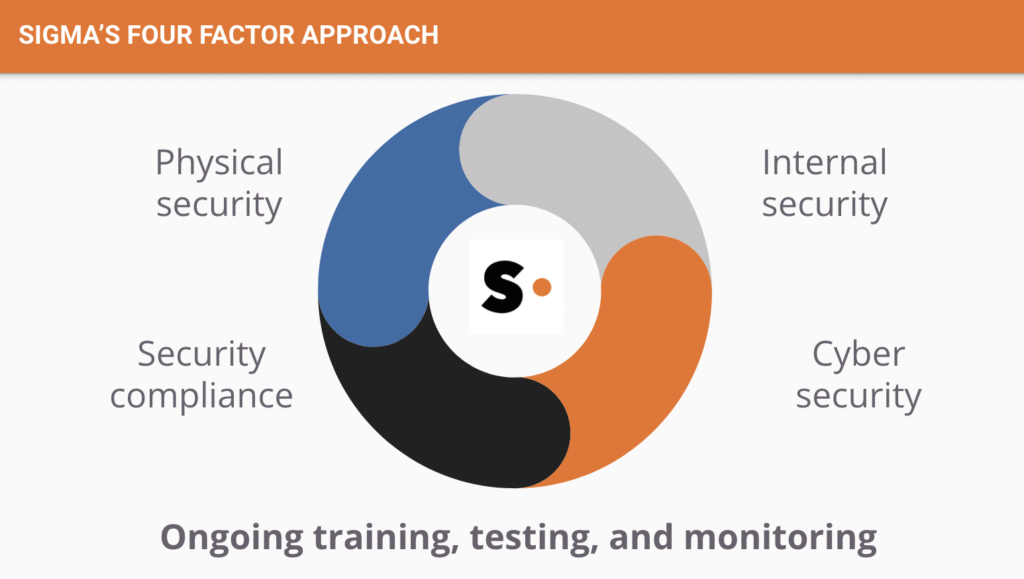As the world becomes more AI-driven, the confidentiality of machine learning data is paramount. Choosing a company to trust with your sensitive data can seem daunting – but it doesn’t have to be. Sigma.ai approaches data annotation with a security-first mindset, setting us apart from our competitors. Sigma is an ISO27001 Certified and 100% GDPR Compliant company, allowing us to handle projects with a variety of security needs. We offer the highest quality data products and services and are able to provide scalable solutions while protecting your sensitive data.
We provide a variety of levels of security, ranging from remote data annotation to our high-security facility for confidential data annotation. Regardless of the complexity and sensitivity of your project, we have a solution to meet your needs. As your project grows and changes, Sigma is able to offer new security features – offering a level of flexibility in security that is unrivaled in the industry.
Data Confidentiality and Security
While your company’s data may not be confidential, it is still an asset that is worth protecting. We take the security of every project, regardless of how sensitive your data may be, very seriously. Many of our clients choose to have their projects annotated securely in our offices with supervision from our experienced staff members. Highly confidential projects (such as those containing Personally Identifiable Information (PII), Protected Health Information (PHI), financial data, or government records) are annotated within our state-of-the-art, high-security clean room. This facility provides the most secure environment for data annotation. This facility provides the most secure environment for data annotation.
What many people fail to realize about data security is how large the human factor in data breaches is. According to a study conducted by IBM in 130 countries, human error was a major contributing cause in 95% of all data breaches. Many outsourced data annotation companies used crowdsourced, temporary workers to complete their projects. This opens the door to a number of security hazards. Rather than rely on these methods of hiring, Sigma works with known and vetted annotators and invests in mandatory security training for them. Our employees are required to sign NDAs and Acceptable Use Policies, as well as adhere to a Code of Ethics.

Sigma’s Four Factor Approach
Sigma utilizes a four-factor approach to security: security compliance, internal security, physical security, and data encryption. This multi-layered approach to data protection ensures that your data is safe from human error, malicious attacks, unauthorized access to data, and theft. We strictly control and monitor access to our electronic resources and implement tools that protect our computers, servers, and communications. Sigma employees receive mandatory training in data security and are compliant with data labeling confidentiality regulations.
In addition to training and cybersecurity tools, we also implement physical security in our facilities. Employees must use both identification badges and biometric scanners in order to gain access to the building. A guard is stationed at the entrance to the secure data annotation areas, monitors the metal detector, and visually inspects employees entering the area. Outside materials, including personal devices such as cell phones, are never allowed in these secure areas.
We have worked hard to create the most secure environment for data annotation, and are proud of what we have accomplished. Our team has put together an in-depth video, highlighting the security features of our facility. We hope it will help you to better understand data protection, and why Sigma is the company to entrust with your important data.
Watch this video to learn about our high-security data annotation facility or contact us directly to discuss your needs!
